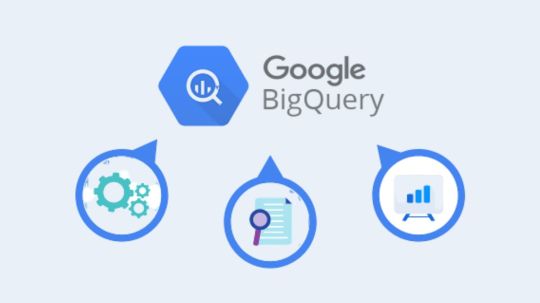#self-service solutions AI
Explore tagged Tumblr posts
Text
Top AI Features Powering Next-Gen Contact Centers

Introduction
The evolution of contact centers from traditional call hubs to intelligent customer engagement platforms is being driven by artificial intelligence (AI). In a hyper-connected world where customers expect fast, personalized, and efficient service, AI is playing a transformative role. From automating routine tasks to offering real-time analytics and sentiment analysis, AI is redefining the standards of customer support. Modern contact centers, powered by AI, are becoming more responsive, proactive, and insightful—enhancing both customer satisfaction and operational efficiency.
This article explores the top AI features that are revolutionizing next-generation contact centers and how they are helping businesses stay competitive in today’s digital landscape.
1. AI-Powered Chatbots and Virtual Assistants
Perhaps the most visible AI application in contact centers is the use of chatbots and virtual assistants. These tools are capable of handling thousands of customer queries simultaneously across various platforms, including websites, mobile apps, and social media.
Key Benefits:
24/7 availability
Immediate responses to FAQs
Reduced workload for human agents
Seamless integration with CRM systems
Advanced AI chatbots use Natural Language Processing (NLP) and Machine Learning (ML) to understand customer queries better and improve over time. They also support multilingual interactions, expanding a business’s global reach.
2. Intelligent Call Routing
Traditional call routing systems use basic algorithms like round-robin or skill-based routing. AI takes this to the next level with predictive routing, which uses historical data and real-time analytics to match customers with the most suitable agents.
Example: If a customer previously had a billing issue and rated a certain agent highly, AI can route future related calls directly to that agent, ensuring a personalized experience.
Benefits:
Enhanced customer satisfaction
Reduced average handling time
Better utilization of agent expertise
3. Speech and Sentiment Analysis
AI-driven sentiment analysis tools assess the tone, pitch, and language of customer conversations in real-time. This allows agents to adapt their approach based on the emotional state of the caller.
Key Capabilities:
Detect frustration or satisfaction
Real-time alerts for supervisors
Contextual response suggestions for agents
This not only helps in de-escalating potential conflicts but also contributes to training and performance reviews.
4. Real-Time Agent Assistance
AI can provide live suggestions, answers, and prompts to agents during customer interactions. Known as Agent Assist or Co-Pilot systems, these features boost agent efficiency and reduce error rates.
Use Cases:
Auto-suggesting answers based on past tickets or knowledge base
Providing legal or compliance language for regulated industries
Offering upsell/cross-sell suggestions during the call
This enables even less-experienced agents to perform like experts, thereby maintaining service consistency.
5. Predictive and Prescriptive Analytics
Modern AI systems can analyze historical customer data to predict future behaviors and offer prescriptive actions. For example, AI can forecast customer churn and suggest personalized retention strategies.
Key Features:
Trend identification
Churn prediction
Customer lifetime value estimation
Product recommendation modeling
These analytics turn contact centers from reactive to proactive units that can anticipate customer needs and take preventive measures.
6. Automated Quality Monitoring
Quality assurance (QA) in traditional contact centers involves manual listening to a random sample of calls. AI changes this by automatically analyzing 100% of customer interactions for compliance, tone, and performance metrics.
Advantages:
Scalable and unbiased QA process
Immediate feedback loops
Identification of training opportunities
This ensures consistent service quality and helps businesses remain compliant with industry standards and regulations.
7. AI-Driven Self-Service
Customers increasingly prefer solving issues on their own. AI enables robust self-service solutions through intelligent FAQs, voice assistants, and dynamic help centers.
Core Components:
AI-curated knowledge bases
Interactive voice response (IVR) systems
Visual IVRs with dynamic menus based on customer behavior
These systems can deflect a significant volume of queries, saving time and reducing contact center costs.
8. Workforce Optimization (WFO)
AI enhances workforce optimization by analyzing call volumes, customer demand patterns, and agent performance to create optimized schedules and workloads.
Capabilities Include:
Forecasting peak interaction times
Automating shift scheduling
Identifying training needs through performance data
This ensures that the right number of agents with the right skills are available at the right time.
9. Multilingual Support
With global customer bases, multilingual support is essential. AI translation engines powered by NLP enable real-time language translation, allowing agents to assist customers in multiple languages.
Benefits:
Expanded market reach
Consistent support quality
Reduced need for native-speaking agents
Advanced systems even recognize regional dialects and slang, further enhancing communication accuracy.
10. Omnichannel AI Integration
Today’s customers expect consistent service across phone, email, chat, social media, and more. AI enables omnichannel support by centralizing data and ensuring continuity in customer interactions.
Features Include:
Unified customer profiles
Context-aware responses
Seamless channel transitions (e.g., chat to call)
This creates a cohesive customer experience and provides agents with the full context of past interactions, reducing redundancy and frustration.
Conclusion
AI is not just an enhancement to traditional contact center operations—it is a fundamental driver of their transformation. From handling repetitive tasks to offering deep insights into customer behavior, AI is redefining what’s possible in customer service.
By leveraging AI-powered features like chatbots, intelligent routing, sentiment analysis, and predictive analytics, next-generation contact centers are achieving higher efficiency, better customer satisfaction, and lower operational costs. The focus is shifting from handling calls to delivering experiences, and AI is at the heart of that shift.
Businesses that invest in AI capabilities today will be better positioned to adapt to the growing demands of tomorrow’s customers. As AI continues to evolve, contact centers will become smarter, faster, and more human than ever before—setting a new standard for customer engagement in the digital era.
#AI contact centers#AI in customer service#AI-powered chatbots#virtual assistants for support#intelligent call routing#real-time agent assistance#AI sentiment analysis#predictive analytics in contact centers#AI customer experience#automated quality monitoring#AI in workforce optimization#self-service solutions AI#omnichannel customer support AI#speech analytics in call centers#AI call center solutions#AI customer engagement tools#AI-driven customer insights#machine learning in contact centers#AI customer service automation
0 notes
Text
0 notes
Text
Truth
An old friend of mine has retreated into social isolation, which I could have taken personally. But we've been through a lot together in our lives and I refuse to take anything he does personally. Have to give grace if you want to get it.
He said he wants to get away from the self so influenced by other people and find his center. I think that's a great idea. I'd like to do it myself, but it's a scary thought; even when I'm alone, I'm not truly alone. I reach out to people, I meet new people in virtual spaces, I write stories with others, and always look for social stimulation.
How much of me is 'me'? But, is 'me' something worth defining?
Because for a long time, I've seen myself as a hollow shell battered around by the world, filled up with its energies, emptied, charged up, wrung out, and again and again. I don't like to see myself, because myself is a dragon, a towering egomaniac, a striving and suffering lunatic who hurts herself with the intensity of her ambitions.
The only thing chasing ambition has ever gotten me is pain; I slam into walls and doors, and the faster I'm running, the harder the impact. The smarter I'm being, the further into trouble I get.
My forays into the jungle of American civilization are never productive. They start out hopeful, then end in mutual misery.
You know, I was driving through San Francisco at night last week. I saw billboards advertising not just AI, but digital solutions for AI-generated-image-detection services. Anti-AI. In a sea of lights and concrete, I saw a targeted advertisement as I sat in rush-hour traffic, telling me that I could literally 'find truth' with a product.
And earlier that day, I'd been walking through Yosemite, where the ravens flew by the dozens like bands of kings, with their hooked beaks and proud eyes, their manes of spiky feathers on their chest -- they looked at me and I looked at them. We saw each other, and there was truth there.
And the people who call themselves 'realists' will tell me of the meaninglessness of that experience, that the creature is somehow beneath me, and my deranged mind is deriving meaning from nothing.
Or, if my interpretation of the raven's symbol pleases their vanity, they will feed me scraps and lift me up like a treasured Bug a la some Jack London-esque short story and make me their favorite poet-propagandist. I'll be their truth maker.
And I woke up this morning with the insulin catheter in my abdomen ripped free, something that's never happened before. It was 4 AM. I replaced it without making too much noise and went to write a poem about wanting to sleep that made me cry -- a poem I wish I could share here, but it's going into a collection I intend to publish and therefore in order to sell the rights to print it exclusively it cannot appear in other media.
Well, after writing that poem, and crying, I went back to bed and held my wife. We slept in each other's arms and that's the truth.
Then we were woken up by a call from an unemployment benefits adjudicator who asked very pointed questions about why I left my previous job, opened up old wounds around confusion, anxiety, discrimination, being targeted by malicious parents, and feeling unprotected by admin or HR.
I told my story (again). I told the truth. They, who agreed not to 'contest' unemployment benefits (I suppose that means not filing an appeal for the approval decision) will also tell their truth. But they did not tell me the whole truth when I made the agreement to resign in grace rather than work somewhere I was made to feel so unwelcome. They kept many truths to themselves.
So what is the truth. The truth is that more and more I feel like a gasping animal caught in a net of buzzing light that Just
Won't
Stop
My truth, the thing I know inside me so true and deep, is that when I die, I will hear the sound of wind in trees. It will get louder and louder, until it overtakes me. It will transport me. It is the holiest sound I know. It sounds like the sea. It sounds like the hushings of a loving Universe.
It sounds like the Moon waking me with her light, to kiss me on the brow, and guide me back to sleep, to let me know I am safe and small. Truth.
41 notes
·
View notes
Text
How AI is Changing Jobs: The Rise of Automation and How to Stay Ahead in 2025
AI and Jobs

Artificial Intelligence (AI) is everywhere. From self-checkout kiosks to AI-powered chatbots handling customer service, it’s changing the way businesses operate. While AI is making things faster and more efficient, it’s also making some jobs disappear. If you’re wondering how this affects you and what you can do about it, keep reading — because the future is already here.
The AI Boom: How It’s Reshaping the Workplace
AI is not just a buzzword anymore; it’s the backbone of modern business. Companies are using AI for automation, decision-making, and customer interactions. But what does that mean for jobs?
AI is Taking Over Repetitive Tasks
Gone are the days when data entry, basic accounting, and customer support relied solely on humans. AI tools like ChatGPT, Jasper, and Midjourney are doing tasks that once required an entire team. This means fewer jobs in these sectors, but also new opportunities elsewhere.
Companies are Hiring Fewer People
With AI handling routine work, businesses don’t need as many employees as before. Hiring freezes, downsizing, and increased automation are making it tougher to land a new job.
AI-Related Jobs are on the Rise
On the flip side, there’s massive demand for AI engineers, data scientists, and automation specialists. Companies need people who can build, maintain, and optimize AI tools.
Trending AI Skills Employers Want:
Machine Learning & Deep Learning
Prompt Engineering
AI-Powered Marketing & SEO
AI in Cybersecurity
Data Science & Analytics
Click Here to Know more
The Decline of Traditional Job Offers
AI is shaking up industries, and some job roles are disappearing faster than expected. Here’s why new job offers are on the decline:
AI-Driven Cost Cutting
Businesses are using AI to reduce operational costs. Instead of hiring new employees, they’re investing in AI-powered solutions that automate tasks at a fraction of the cost.
The Gig Economy is Replacing Full-Time Jobs
Instead of hiring full-time staff, companies are outsourcing work to freelancers and gig workers. This means fewer stable job opportunities but more chances for independent workers.
Economic Uncertainty
The global economy is unpredictable, and businesses are cautious about hiring. With AI improving efficiency, companies are choosing to scale down their workforce.
Click Here to Know more
Preparing for an AI-Driven Future
Feeling worried? Don’t be. AI isn’t just taking jobs — it’s also creating new ones. The key is to stay ahead by learning the right skills and adapting to the changing landscape.
1. Learn AI and Data Analytics
The best way to future-proof your career is to understand AI. Free courses on platforms like Coursera, Udemy, and Khan Academy can get you started.
2. Develop Soft Skills AI Can’t Replace
AI is great at automation, but it lacks emotional intelligence, creativity, and critical thinking. Strengthening these skills can give you an edge.
3. Embrace Remote & Freelance Work
With traditional jobs shrinking, freelancing is a great way to stay flexible. Sites like Upwork, Fiverr, and Toptal have booming demand for AI-related skills.
4. Use AI to Your Advantage
Instead of fearing AI, learn how to use it. AI-powered tools like ChatGPT, Jasper, and Canva can help boost productivity and creativity.
5. Never Stop Learning
Technology evolves fast. Stay updated with new AI trends, attend webinars, and keep improving your skills.
Click Here to Know more
Final Thoughts
AI is here to stay, and it’s changing the job market rapidly. While some traditional roles are disappearing, new opportunities are emerging. The key to surviving (and thriving) in this AI-driven world is adaptability. Keep learning, stay flexible, and embrace AI as a tool — not a threat.
Click Here to Know more
Share this blog if you found it helpful! Let’s spread awareness and help people prepare for the AI revolution.
3 notes
·
View notes
Text
The Future of Food Delivery Services: New Trends and Predictions
Ordering food online has become incredibly popular among millennials and Gen Z, all thanks to the easy availability of high-speed internet connections and smartphones. Consumers are getting their favorite food items from their preferred restaurants directly to their doorsteps with a few clicks. So if you are in the food industry or own a restaurant, you must be aware of the future of online delivery services to stay updated and make developments to your restaurant following the modern trends.

Find out what the future of food delivery services, the current popular food delivery trends, and what we can predict in this article. Before discovering the future scope of the food ordering system or delivery process, letlook closelylook at the current food delivery service statistics.
Food delivery services statistics
According to reports, the food delivery service market is expected to increase to $34.68 billion by the end of 2024, which clearly shows a steady rise in the growth curve.
There will be an estimated growth of 19.88% in food delivery services between 2024 to 2027. The market for food delivery services could even reach $71.63 billion by 2027.
According to the meal delivery market forecast, the number of users in this sector could reach 2.5BN by 2029.
What’s Next for Food Delivery Services? Key Trends and Future Predictions

The online food ordering market generates almost $27 billion every year. If you, too, want to be a part of this growth, you need to be aware of the following food delivery services trends and predictions for the future.
1. Restaurants launching their food delivery platforms

The recent trend in food delivery services of restaurants is witnessing a shift from the idea of relying on third-party meal delivery partners like Foodpanda, Uber Eats, to directly offering food delivery services of their own.
Consumers also prefer to place food orders directly from the restaurant instead of third-party websites. Well-known food brands like KFC, Pizza Hut, etc have also launched their own food ordering and delivery services, which let their customers order food directly from their restaurant website or mobile app.
Whether you have a big restaurant or a small one, you too can create your restaurant delivery system on your website and save a huge amount of money that you might be spending on third-party platforms. How? The answer is with FoodMato. It is a WordPress-based restaurant management solution that takes care of all your online restaurant management needs, including creating a food delivery system.
Discover the solution now!
2. Virtual assistants
Virtual assistants are getting increasingly popular in multiple industries, including restaurants. However, not a lot of restaurants have adopted this new technology yet, which means you still have a chance to take full advantage of this technology. This is surely going to be dominant in the future.
A virtual assistant is an AI system that accepts the voice commands of your customers and delivers them to your POS system. It not only saves your time but also helps customers place their online orders to your restaurant easily.
3. Green transport system
Using a green transport system is all about using environmentally friendly vehicles. Some restaurants rely on delivery teams that consist of teenagers who drive vehicles older than 10 years, which is harmful to the environment. To avoid this, it is predicted that most restaurants will rely on eco-friendly delivery systems by switching to bikes or electric cars for food delivery in the future.
4. Robotic Vans for delivery
Robotic vans or self-driving robots are redefining the concept of food, groceries, and package deliveries. These robots have made the local food delivery system easy and convenient for restaurant owners as well as customers. Though the usage has not become very popular yet but it has already been witnessed in a few college campuses of the USA for food delivery. More and more applications of these robot vans or self-driving robots are expected in the future in the food delivery market.
5. Increasing cloud kitchens

Cloud kitchens or ghost kitchens are the new type of restaurants that are based on commercial cooking spaces where foods are prepared only for delivery. They do not have a physical establishment to invite guests for meals as the entire system is based on online orders and delivery. As there is a rapid increase in the demand for online deliveries, the concept of ghost kitchens is anticipated to be more popular.
This allows restaurant owners to reach out to a wider audience without spending much on physical stores and other things that are required for a full-fledged restaurant.
Create your food delivery system with FoodMato
Having your food delivery system comes with multiple benefits that include:
No reliance on third parties.
Better exposure.
Cost saving, you don’t have to pay for third-party platforms.
Increase in profit.
Improves user experience.
Boost brand credibility.
If you want to experience all these advantages for your restaurant, use FoodMato’s complete online restaurant management solution that includes online food delivery services as well. Discover our services now!
Frequently Asked Questions
What is the future of food delivery services?
The future of food delivery services globally appears to be very promising, with an expected growth of 281.52 billion by 2031.
How can I create my food delivery system?
You need the right software to create your food delivery system. Use FoodMato to add a WordPress-based online food delivery system to your website.
What is the cost of creating a food delivery system on my website?
The expense of creating a food delivery system usually depends on the software you use for this purpose. If you are looking for effective and affordable food delivery software, try FoodMato. It offers its complete online restaurant management solution, including food delivery for only $99.
2 notes
·
View notes
Text
How does AI contribute to the automation of software testing?
AI-Based Testing Services

In today’s modern rapid growing software development competitive market, ensuring and assuming quality while keeping up with fast release cycles is challenging and a vital part. That’s where AI-Based Testing comes into play and role. Artificial Intelligence - Ai is changing the software testing and checking process by making it a faster, smarter, and more accurate option to go for.
Smart Test Case Generation:
AI can automatically & on its own analyze past test results, user behavior, and application logic to generate relevant test cases with its implementation. This reduces the burden on QA teams, saves time, and assures that the key user and scenarios are always covered—something manual processes might overlook and forget.
Faster Bug Detection and Resolution:
AI-Based Testing leverages the machine learning algorithms to detect the defects more efficiently by identifying the code patterns and anomalies in the code behavior and structure. This proactive approach helps and assists the testers to catch the bugs as early as possible in the development cycle, improving product quality and reducing the cost of fixes.
Improved Test Maintenance:
Even a small or minor UI change can break or last the multiple test scripts in traditional automation with its adaptation. The AI models can adapt to these changes, self-heal broken scripts, and update them automatically. This makes test maintenance less time-consuming and more reliable.
Enhanced Test Coverage:
AI assures that broader test coverage and areas are covered by simulating the realtime-user interactions and analyzing vast present datasets into the scenario. It aids to identify the edge cases and potential issues that might not be obvious to human testers. As a result, AI-based testing significantly reduces the risk of bugs in production.
Predictive Analytics for Risk Management:
AI tools and its features can analyze the historical testing data to predict areas of the application or product crafted that are more likely to fail. This insight helps the teams to prioritize their testing efforts, optimize resources, and make better decisions throughout the development lifecycle.
Seamless Integration with Agile and DevOps:
AI-powered testing tools are built to support continuous testing environments. They integrate seamlessly with CI/CD pipelines, enabling faster feedback, quick deployment, and improved collaboration between development and QA teams.
Top technology providers like Suma Soft, IBM, Cyntexa, and Cignex lead the way in AI-Based Testing solutions. They offer and assist with customized services that help the businesses to automate down the Testing process, improve the software quality, and accelerate time to market with advanced AI-driven tools.
#it services#technology#software#saas#saas development company#saas technology#digital transformation#software testing
2 notes
·
View notes
Text
Chen Yi - ENTJ
Chen Yi is assertive, direct, jealous, stubborn, impatient, and ambitious.
He is extremely focused on his work and has no problem taking the lead or delegating. He gives succinct directions and keeps everyone around him to task. Respect, responsibility, and authority are important to him but he doesn't mind bending the rules occasionally if he decides it would be better that way. He's protective, sometimes to the point of being controlling. He tends to hinge his self worth on extrinsic success and failure. Sometimes he gets caught up in the tunnel vision of his goals and fails to see things around him that are obvious to others, especially when feelings are involved.
Most of his dialogue consists of commands. For the most part, people listen to them, too.







The only exception usually is Ai Di.






Normally he makes his decisions quickly and by the time he's telling other people about it, he has a list of the steps he already took to solve the issue.
When he was discussing the plans to infiltrate the school with Fan Ze Rui, he was like: I already talked to the principal about xyz and found out what he wanted, here's what we're doing.

Or when Fan Ze Rui got stabbed and he was like oh yeah, I already took care of that, no worries

Chen Yi has shit to do and unfortunately for Ai Di, he is far too impatient to wait for someone so portable


But sometimes (rarely) picking Ai Di up and physically carrying him away isn't the solution. It bothers him in these situations when Ai Di is out of his control



Yet, when Ai Di reacts exactly like he expects him to, that's when the dimples come out


When things aren't going Chen Yi's way, we see him either drinking excessively or jumping rope like a madman with a 1000 yard stare

Jump rope not pictured, but I wanted to put this here anyway
One of his biggest hangups is failure and disappointing Chen Dong Yang





Part of that also is the fact that he's pretty much oblivious to his own feelings and the feelings of others. He's so busy doing everything he can with the gang, keeping tabs on Ai Di and Fan Ze Rui's whereabouts 24/7 so he can protect them, and being their on-call designated driver and pickup service that he actually has no idea who he is into romantically. He thinks he knows but it takes several people directly asking him if he's sure about it for him to really consider that he's confused about his feelings for the boss and Ai Di.


Next up will be ENTJ x ISTP dynamics and maybe some other assorted dynamics from Kiseki mixed in too
If you missed it, I also typed
Ai Di - ISTP
Fan Ze Rui - INFJ
Bai Zong Yi - ISTJ
and talked a bit about Fan Ze Rui and Bai Zong Yi's relationship here
29 notes
·
View notes
Text
Google Cloud’s BigQuery Autonomous Data To AI Platform

BigQuery automates data analysis, transformation, and insight generation using AI. AI and natural language interaction simplify difficult operations.
The fast-paced world needs data access and a real-time data activation flywheel. Artificial intelligence that integrates directly into the data environment and works with intelligent agents is emerging. These catalysts open doors and enable self-directed, rapid action, which is vital for success. This flywheel uses Google's Data & AI Cloud to activate data in real time. BigQuery has five times more organisations than the two leading cloud providers that just offer data science and data warehousing solutions due to this emphasis.
Examples of top companies:
With BigQuery, Radisson Hotel Group enhanced campaign productivity by 50% and revenue by over 20% by fine-tuning the Gemini model.
By connecting over 170 data sources with BigQuery, Gordon Food Service established a scalable, modern, AI-ready data architecture. This improved real-time response to critical business demands, enabled complete analytics, boosted client usage of their ordering systems, and offered staff rapid insights while cutting costs and boosting market share.
J.B. Hunt is revolutionising logistics for shippers and carriers by integrating Databricks into BigQuery.
General Mills saves over $100 million using BigQuery and Vertex AI to give workers secure access to LLMs for structured and unstructured data searches.
Google Cloud is unveiling many new features with its autonomous data to AI platform powered by BigQuery and Looker, a unified, trustworthy, and conversational BI platform:
New assistive and agentic experiences based on your trusted data and available through BigQuery and Looker will make data scientists, data engineers, analysts, and business users' jobs simpler and faster.
Advanced analytics and data science acceleration: Along with seamless integration with real-time and open-source technologies, BigQuery AI-assisted notebooks improve data science workflows and BigQuery AI Query Engine provides fresh insights.
Autonomous data foundation: BigQuery can collect, manage, and orchestrate any data with its new autonomous features, which include native support for unstructured data processing and open data formats like Iceberg.
Look at each change in detail.
User-specific agents
It believes everyone should have AI. BigQuery and Looker made AI-powered helpful experiences generally available, but Google Cloud now offers specialised agents for all data chores, such as:
Data engineering agents integrated with BigQuery pipelines help create data pipelines, convert and enhance data, discover anomalies, and automate metadata development. These agents provide trustworthy data and replace time-consuming and repetitive tasks, enhancing data team productivity. Data engineers traditionally spend hours cleaning, processing, and confirming data.
The data science agent in Google's Colab notebook enables model development at every step. Scalable training, intelligent model selection, automated feature engineering, and faster iteration are possible. This agent lets data science teams focus on complex methods rather than data and infrastructure.
Looker conversational analytics lets everyone utilise natural language with data. Expanded capabilities provided with DeepMind let all users understand the agent's actions and easily resolve misconceptions by undertaking advanced analysis and explaining its logic. Looker's semantic layer boosts accuracy by two-thirds. The agent understands business language like “revenue” and “segments” and can compute metrics in real time, ensuring trustworthy, accurate, and relevant results. An API for conversational analytics is also being introduced to help developers integrate it into processes and apps.
In the BigQuery autonomous data to AI platform, Google Cloud introduced the BigQuery knowledge engine to power assistive and agentic experiences. It models data associations, suggests business vocabulary words, and creates metadata instantaneously using Gemini's table descriptions, query histories, and schema connections. This knowledge engine grounds AI and agents in business context, enabling semantic search across BigQuery and AI-powered data insights.
All customers may access Gemini-powered agentic and assistive experiences in BigQuery and Looker without add-ons in the existing price model tiers!
Accelerating data science and advanced analytics
BigQuery autonomous data to AI platform is revolutionising data science and analytics by enabling new AI-driven data science experiences and engines to manage complex data and provide real-time analytics.
First, AI improves BigQuery notebooks. It adds intelligent SQL cells to your notebook that can merge data sources, comprehend data context, and make code-writing suggestions. It also uses native exploratory analysis and visualisation capabilities for data exploration and peer collaboration. Data scientists can also schedule analyses and update insights. Google Cloud also lets you construct laptop-driven, dynamic, user-friendly, interactive data apps to share insights across the organisation.
This enhanced notebook experience is complemented by the BigQuery AI query engine for AI-driven analytics. This engine lets data scientists easily manage organised and unstructured data and add real-world context—not simply retrieve it. BigQuery AI co-processes SQL and Gemini, adding runtime verbal comprehension, reasoning skills, and real-world knowledge. Their new engine processes unstructured photographs and matches them to your product catalogue. This engine supports several use cases, including model enhancement, sophisticated segmentation, and new insights.
Additionally, it provides users with the most cloud-optimized open-source environment. Google Cloud for Apache Kafka enables real-time data pipelines for event sourcing, model scoring, communications, and analytics in BigQuery for serverless Apache Spark execution. Customers have almost doubled their serverless Spark use in the last year, and Google Cloud has upgraded this engine to handle data 2.7 times faster.
BigQuery lets data scientists utilise SQL, Spark, or foundation models on Google's serverless and scalable architecture to innovate faster without the challenges of traditional infrastructure.
An independent data foundation throughout data lifetime
An independent data foundation created for modern data complexity supports its advanced analytics engines and specialised agents. BigQuery is transforming the environment by making unstructured data first-class citizens. New platform features, such as orchestration for a variety of data workloads, autonomous and invisible governance, and open formats for flexibility, ensure that your data is always ready for data science or artificial intelligence issues. It does this while giving the best cost and decreasing operational overhead.
For many companies, unstructured data is their biggest untapped potential. Even while structured data provides analytical avenues, unique ideas in text, audio, video, and photographs are often underutilised and discovered in siloed systems. BigQuery instantly tackles this issue by making unstructured data a first-class citizen using multimodal tables (preview), which integrate structured data with rich, complex data types for unified querying and storage.
Google Cloud's expanded BigQuery governance enables data stewards and professionals a single perspective to manage discovery, classification, curation, quality, usage, and sharing, including automatic cataloguing and metadata production, to efficiently manage this large data estate. BigQuery continuous queries use SQL to analyse and act on streaming data regardless of format, ensuring timely insights from all your data streams.
Customers utilise Google's AI models in BigQuery for multimodal analysis 16 times more than last year, driven by advanced support for structured and unstructured multimodal data. BigQuery with Vertex AI are 8–16 times cheaper than independent data warehouse and AI solutions.
Google Cloud maintains open ecology. BigQuery tables for Apache Iceberg combine BigQuery's performance and integrated capabilities with the flexibility of an open data lakehouse to link Iceberg data to SQL, Spark, AI, and third-party engines in an open and interoperable fashion. This service provides adaptive and autonomous table management, high-performance streaming, auto-AI-generated insights, practically infinite serverless scalability, and improved governance. Cloud storage enables fail-safe features and centralised fine-grained access control management in their managed solution.
Finaly, AI platform autonomous data optimises. Scaling resources, managing workloads, and ensuring cost-effectiveness are its competencies. The new BigQuery spend commit unifies spending throughout BigQuery platform and allows flexibility in shifting spend across streaming, governance, data processing engines, and more, making purchase easier.
Start your data and AI adventure with BigQuery data migration. Google Cloud wants to know how you innovate with data.
#technology#technews#govindhtech#news#technologynews#BigQuery autonomous data to AI platform#BigQuery#autonomous data to AI platform#BigQuery platform#autonomous data#BigQuery AI Query Engine
2 notes
·
View notes
Text

Discover the future of self-service with Panashi’s latest kiosk designs – where cutting-edge technology meets sleek aesthetics.
Our newest range of kiosks is crafted to deliver a seamless user experience across industries, from banking and retail to healthcare and hospitality. Designed with a modern, minimalist touch, these kiosks feature responsive touchscreens, high-resolution displays and intuitive interfaces for faster and more engaging interactions.
Customizable to match your brand identity, they come in a variety of finishes and colors, blending effortlessly into any environment. Built for durability and performance, our kiosk machines support advanced features like biometric authentication, QR code scanning, contactless payments and even AI-driven recommendations. Whether you’re streamlining customer service or enhancing operational efficiency, Panashi’s kiosks are engineered to exceed expectations. Step into the future with kiosks that don’t just work — they impress. Experience innovation, elegance and reliability – all in one powerful solution.
#Panashi#KioskTechnology#SelfServiceSolutions#Innovation#BusinessAutomation#SmartKiosks#PanashiKiosk#KioskDesign#TrendingDesign#InnovativeKiosks#RetailDesign#CustomerExperience#DigitalKiosks#UserFriendlyDesign#SmartRetail#DesignTrends#InteractiveKiosks#TechInRetail#KioskSolutions#ModernDesign#BrandExperience#RetailInnovation#DesignInspiration#FutureOfRetail#selfservicekiosk#businesssolution#kiosk#kioskmachine#bankingkiosk#insurancekiosk
2 notes
·
View notes
Text

AI’s Role in Business Process Automation
Automation has come a long way from simply replacing manual tasks with machines. With AI stepping into the scene, business process automation is no longer just about cutting costs or speeding up workflows—it’s about making smarter, more adaptive decisions that continuously evolve. AI isn't just doing what we tell it; it’s learning, predicting, and innovating in ways that redefine how businesses operate.
From hyperautomation to AI-powered chatbots and intelligent document processing, the world of automation is rapidly expanding. But what does the future hold?
What is Business Process Automation?
Business Process Automation (BPA) refers to the use of technology to streamline and automate repetitive, rule-based tasks within an organization. The goal is to improve efficiency, reduce errors, cut costs, and free up human workers for higher-value activities. BPA covers a wide range of functions, from automating simple data entry tasks to orchestrating complex workflows across multiple departments.
Traditional BPA solutions rely on predefined rules and scripts to automate tasks such as invoicing, payroll processing, customer service inquiries, and supply chain management. However, as businesses deal with increasing amounts of data and more complex decision-making requirements, AI is playing an increasingly critical role in enhancing BPA capabilities.
AI’s Role in Business Process Automation
AI is revolutionizing business process automation by introducing cognitive capabilities that allow systems to learn, adapt, and make intelligent decisions. Unlike traditional automation, which follows a strict set of rules, AI-driven BPA leverages machine learning, natural language processing (NLP), and computer vision to understand patterns, process unstructured data, and provide predictive insights.
Here are some of the key ways AI is enhancing BPA:
Self-Learning Systems: AI-powered BPA can analyze past workflows and optimize them dynamically without human intervention.
Advanced Data Processing: AI-driven tools can extract information from documents, emails, and customer interactions, enabling businesses to process data faster and more accurately.
Predictive Analytics: AI helps businesses forecast trends, detect anomalies, and make proactive decisions based on real-time insights.
Enhanced Customer Interactions: AI-powered chatbots and virtual assistants provide 24/7 support, improving customer service efficiency and satisfaction.
Automation of Complex Workflows: AI enables the automation of multi-step, decision-heavy processes, such as fraud detection, regulatory compliance, and personalized marketing campaigns.
As organizations seek more efficient ways to handle increasing data volumes and complex processes, AI-driven BPA is becoming a strategic priority. The ability of AI to analyze patterns, predict outcomes, and make intelligent decisions is transforming industries such as finance, healthcare, retail, and manufacturing.
“At the leading edge of automation, AI transforms routine workflows into smart, adaptive systems that think ahead. It’s not about merely accelerating tasks—it’s about creating an evolving framework that continuously optimizes operations for future challenges.”
— Emma Reynolds, CTO of QuantumOps
Trends in AI-Driven Business Process Automation
1. Hyperautomation
Hyperautomation, a term coined by Gartner, refers to the combination of AI, robotic process automation (RPA), and other advanced technologies to automate as many business processes as possible. By leveraging AI-powered bots and predictive analytics, companies can automate end-to-end processes, reducing operational costs and improving decision-making.
Hyperautomation enables organizations to move beyond simple task automation to more complex workflows, incorporating AI-driven insights to optimize efficiency continuously. This trend is expected to accelerate as businesses adopt AI-first strategies to stay competitive.
2. AI-Powered Chatbots and Virtual Assistants
Chatbots and virtual assistants are becoming increasingly sophisticated, enabling seamless interactions with customers and employees. AI-driven conversational interfaces are revolutionizing customer service, HR operations, and IT support by providing real-time assistance, answering queries, and resolving issues without human intervention.
The integration of AI with natural language processing (NLP) and sentiment analysis allows chatbots to understand context, emotions, and intent, providing more personalized responses. Future advancements in AI will enhance their capabilities, making them more intuitive and capable of handling complex tasks.
3. Process Mining and AI-Driven Insights
Process mining leverages AI to analyze business workflows, identify bottlenecks, and suggest improvements. By collecting data from enterprise systems, AI can provide actionable insights into process inefficiencies, allowing companies to optimize operations dynamically.
AI-powered process mining tools help businesses understand workflow deviations, uncover hidden inefficiencies, and implement data-driven solutions. This trend is expected to grow as organizations seek more visibility and control over their automated processes.
4. AI and Predictive Analytics for Decision-Making
AI-driven predictive analytics plays a crucial role in business process automation by forecasting trends, detecting anomalies, and making data-backed decisions. Companies are increasingly using AI to analyze customer behaviour, market trends, and operational risks, enabling them to make proactive decisions.
For example, in supply chain management, AI can predict demand fluctuations, optimize inventory levels, and prevent disruptions. In finance, AI-powered fraud detection systems analyze transaction patterns in real-time to prevent fraudulent activities. The future of BPA will heavily rely on AI-driven predictive capabilities to drive smarter business decisions.
5. AI-Enabled Document Processing and Intelligent OCR
Document-heavy industries such as legal, healthcare, and banking are benefiting from AI-powered Optical Character Recognition (OCR) and document processing solutions. AI can extract, classify, and process unstructured data from invoices, contracts, and forms, reducing manual effort and improving accuracy.
Intelligent document processing (IDP) combines AI, machine learning, and NLP to understand the context of documents, automate data entry, and integrate with existing enterprise systems. As AI models continue to improve, document processing automation will become more accurate and efficient.
Going Beyond Automation
The future of AI-driven BPA will go beyond automation—it will redefine how businesses function at their core. Here are some key predictions for the next decade:
Autonomous Decision-Making: AI systems will move beyond assisting human decisions to making autonomous decisions in areas such as finance, supply chain logistics, and healthcare management.
AI-Driven Creativity: AI will not just automate processes but also assist in creative and strategic business decisions, helping companies design products, create marketing strategies, and personalize customer experiences.
Human-AI Collaboration: AI will become an integral part of the workforce, working alongside employees as an intelligent assistant, boosting productivity and innovation.
Decentralized AI Systems: AI will become more distributed, with businesses using edge AI and blockchain-based automation to improve security, efficiency, and transparency in operations.
Industry-Specific AI Solutions: We will see more tailored AI automation solutions designed for specific industries, such as AI-driven legal research tools, medical diagnostics automation, and AI-powered financial advisory services.
AI is no longer a futuristic concept—it’s here, and it’s already transforming the way businesses operate. What’s exciting is that we’re still just scratching the surface. As AI continues to evolve, businesses will find new ways to automate, innovate, and create efficiencies that we can’t yet fully imagine.
But while AI is streamlining processes and making work more efficient, it’s also reshaping what it means to be human in the workplace. As automation takes over repetitive tasks, employees will have more opportunities to focus on creativity, strategy, and problem-solving. The future of AI in business process automation isn’t just about doing things faster—it’s about rethinking how we work all together.
Learn more about DataPeak:
#datapeak#factr#technology#agentic ai#saas#artificial intelligence#machine learning#ai#ai-driven business solutions#machine learning for workflow#ai solutions for data driven decision making#ai business tools#aiinnovation#digitaltools#digital technology#digital trends#dataanalytics#data driven decision making#data analytics#cloudmigration#cloudcomputing#cybersecurity#cloud computing#smbs#chatbots
2 notes
·
View notes
Text
Smarter Support: How AI is Enhancing Call Center Operations
Introduction
The call center industry has long been a critical component of customer service, bridging the gap between businesses and consumers. However, with growing customer expectations and an increasing volume of inquiries, traditional call center models have struggled to keep pace. The integration of Artificial Intelligence (AI) has emerged as a game-changer, transforming call center operations into more efficient, cost-effective, and customer-centric platforms.
The Role of AI in Call Centers
AI-powered technologies are revolutionizing call centers by automating repetitive tasks, enhancing customer interactions, and improving overall operational efficiency. AI-driven solutions, such as chatbots, virtual assistants, speech analytics, and predictive analytics, have redefined how businesses handle customer support.
AI-Powered Chatbots and Virtual Assistants
One of the most significant AI-driven innovations in call centers is the deployment of chatbots and virtual assistants. These AI systems can handle a vast range of customer queries without human intervention, providing instant responses and reducing wait times. Unlike traditional interactive voice response (IVR) systems, modern AI-powered assistants use natural language processing (NLP) to understand and respond to customer inquiries in a conversational manner.
Key benefits of AI chatbots include:
24/7 availability, ensuring customers receive support at any time.
Reduced workload for human agents, allowing them to focus on complex queries.
Consistent and accurate responses, minimizing the risk of misinformation.
Speech Analytics and Sentiment Analysis
AI-driven speech analytics enables call centers to analyze customer interactions in real-time. By processing voice data, AI can detect customer sentiment, stress levels, and even emotional cues. This information helps agents tailor their responses appropriately, improving the overall customer experience.
Advantages of speech analytics include:
Identifying dissatisfied customers for proactive engagement.
Improving agent performance through real-time coaching and feedback.
Enhancing compliance monitoring by ensuring adherence to scripts and regulatory guidelines.
Predictive Analytics and AI-Driven Insights
Predictive analytics is another powerful AI application in call centers. By analyzing historical data and customer behavior, AI can anticipate customer needs and suggest appropriate responses. This enables businesses to personalize interactions and proactively address potential issues before they escalate.
Benefits of predictive analytics include:
Reducing call volumes by predicting and resolving issues before they arise.
Enhancing customer satisfaction through proactive outreach.
Optimizing workforce management by forecasting call volume trends and staffing needs.
Intelligent Call Routing
AI enhances call routing by ensuring customers are connected to the most suitable agents based on their queries, language preferences, and past interactions. Intelligent call routing minimizes wait times and improves first-call resolution rates.
Advantages of intelligent call routing include:
Faster issue resolution by directing calls to the right agents.
Improved customer satisfaction through personalized interactions.
Increased efficiency by reducing call transfers and wait times.
Automated Quality Assurance
Traditionally, call center quality assurance (QA) required manual review of call recordings. AI-driven QA systems automate this process by analyzing every interaction for compliance, tone, and resolution effectiveness. AI ensures that quality standards are consistently met without the need for extensive human oversight.
Benefits of automated QA include:
Faster and more accurate evaluation of agent performance.
Identification of training opportunities to enhance service quality.
Increased compliance with industry regulations and best practices.
Challenges of AI Implementation in Call Centers
Despite its numerous benefits, AI adoption in call centers comes with challenges. These include:
Integration with Legacy Systems: Many call centers operate on outdated infrastructure that may not seamlessly integrate with AI solutions.
Data Privacy and Security Concerns: AI systems rely on large amounts of data, raising concerns about data protection and compliance with privacy regulations.
Customer Resistance to AI: Some customers prefer human interactions over automated responses, necessitating a balanced approach to AI deployment.
Initial Implementation Costs: While AI can reduce long-term operational costs, the initial investment in AI technology can be significant.
The Future of AI in Call Centers
The future of AI in call centers is promising, with continuous advancements in machine learning, NLP, and automation technologies. Businesses will increasingly adopt AI-powered solutions to enhance customer experiences while optimizing operational efficiency. Emerging trends include:
Hyper-Personalization: AI will analyze vast amounts of customer data to deliver highly personalized interactions.
Augmented Agents: AI will work alongside human agents, providing real-time suggestions and insights to improve response quality.
AI-Driven Self-Service: More businesses will adopt AI-powered self-service portals, reducing the need for direct agent interactions.
Conclusion
AI is revolutionizing call center operations by improving efficiency, reducing costs, and enhancing customer satisfaction. From chatbots and speech analytics to predictive insights and intelligent call routing, AI-driven solutions are setting new standards in customer support. While challenges remain, businesses that strategically implement AI in their call centers will gain a competitive edge in delivering smarter, faster, and more personalized customer service experiences.
Summary:-
AI is transforming call centers by automating tasks, improving efficiency, and enhancing customer experiences. Chatbots and virtual assistants provide instant support, while speech analytics detects sentiment for better interactions. Predictive analytics personalizes service and reduces call volumes. AI-driven call routing and quality assurance optimize operations. Despite challenges, AI is shaping the future of smarter customer support.

#AI in call centers#Call center automation#AI-powered customer support#Chatbots for call centers#Virtual assistants in customer service#Speech analytics AI#Predictive analytics in call centers#Intelligent call routing#AI-driven call center solutions#Automated quality assurance#AI and customer experience#NLP in call centers#Call center efficiency with AI#AI-powered self-service#Future of AI in call centers#AI-driven customer engagement#AI for workforce management#Enhancing call center operations with AI#AI-powered sentiment analysis#AI chatbots for customer support
0 notes
Text
The Economics Of Self Service

You are probably seeing a lot more self service checkouts when you go to the supermarket, airport, banks, and other stores. What are the economics of self service? First up, there are less jobs for human beings in your community because the machines are taking their employment. So, if you care about this fact it is a good idea to take note of this. The next economic question is whether you are saving money because you are now doing the work of what used to be done by a checkout operator paid by the store? There is no guarantee of this and I have seen no dedicated savings based on this in my own experience. “Whether these new technologies replace jobs, relegate existing positions to non-public facing roles or create new employment opportunities, they will result in us interacting with fewer people than we have historically.” (https://theconversation.com/a-rise-in-self-service-technologies-may-cause-a-decline-in-our-sense-of-community-201339)
The Exploitation Of Your Unpaid Labour
Personally, I prefer to use the self service checkout at ALDI, simply because I like to be doing stuff rather than standing their waiting. I am sure there are a bunch of people like me in this regard. However, the trend toward self service checkouts without a clearly defined discount is dishonest business in my view. I wonder when dumb human beings are going to wake up to this scam love affair with technology. This is an exploitation of unpaid labour, which CFOs at big corporations are enamoured of.

The Economics Of Corporate Concentration The over concentration of corporate ownership into too few hands, which is occurring around the world right now is accelerating the automation of services. AI is pushed by PR companies as the greatest thing since the commodification of sex. Human beings are leaving the scene enmasse so that bean counters can save money. Installing a machine or a programme is the popular solution to everything. Obviously, jobs are going and some sort of massive readjustment is going to have to happen.

the economics of self service Workers & Consumers Are Being Shafted The economics of self service is seen as the answer to many previously labour intensive sectors. The economics add up for the shareholders and corporate executive but not for us consumers. In the past, this would matter because consumers used to be king. Now, however, due to the rise of duopolies and oligopolies consumers no longer have buying power. These companies can set the prices because of the lack of competition in the market. Capitalism and the free market economy have been manipulated by these huge companies to the detriment of consumers. The monopolisation of sectors destroys the basis upon which we depend upon for our economies to work for us. Basically, we are being screwed by private enterprise. Putting more and more power into the hands of these businesses is only going to make things worse. Robert Sudha Hamilton is the author of Money Matters: Navigating Credit, Debt & Financial Freedom. ©WordsForWeb Read the full article
3 notes
·
View notes
Text
Human vs. AI: The Ultimate Comparison & Future Possibilities

The debate of Human Intelligence vs Artificial Intelligence (AI) is one of the most important topics in today’s world. With AI advancing at an exponential rate, many wonder: Will AI surpass human intelligence? Can AI replace humans in creativity, emotions, and decision-making?
From self-driving cars to chatbots and even AI-generated art, artificial intelligence is rapidly transforming industries. But despite AI’s impressive capabilities, humans still have unique traits that make them irreplaceable in many aspects.
In this article, we will explore everything about Humans vs AI—how they differ, their strengths and weaknesses, and the possible future where both coexist.
What is Human Intelligence?
Human intelligence refers to the ability to think, learn, adapt, and make decisions based on emotions, logic, and experience. It is shaped by:
Cognitive Abilities: Problem-solving, creativity, critical thinking
Emotional Intelligence: Understanding and managing emotions
Adaptability: Learning from past experiences and adjusting to new situations
Consciousness & Self-Awareness: Understanding oneself and the impact of actions on others
Humans have common sense, emotions, and moral values, which help them make decisions in unpredictable environments.
What is Artificial Intelligence (AI)?
AI (Artificial Intelligence) is the simulation of human intelligence by machines. AI can process massive amounts of data and make decisions much faster than humans. The different types of AI include:
Narrow AI (Weak AI): AI specialized in specific tasks (e.g., voice assistants like Siri, Alexa)
General AI (Strong AI): AI with human-like reasoning and adaptability (not yet achieved)
Super AI: Hypothetical AI that surpasses human intelligence in every aspect
AI works on algorithms, machine learning (ML), deep learning (DL), and neural networks to process information and improve over time.
Strengths & Weaknesses of Human Intelligence
Strengths of Humans
Creativity & Imagination: Humans can create original art, music, inventions, and solutions.
Emotional Understanding: Humans can relate to others through emotions, empathy, and social skills.
Problem-Solving: Humans can solve problems in unpredictable and unfamiliar environments.
Ethical Reasoning: Humans can make moral decisions based on personal beliefs and societal values.
Adaptability: Humans can learn from experience and change their approach dynamically.
Weaknesses of Humans
Limited Processing Power: Humans take time to analyze large amounts of data.
Subjective Thinking: Emotions can sometimes cloud judgment.
Fatigue & Errors: Humans get tired and make mistakes.
Memory Limitations: Humans forget information over time.
Strengths & Weaknesses of AI
Strengths of AI
Fast Data Processing: AI can analyze vast datasets in seconds.
Accuracy & Precision: AI minimizes errors in calculations and predictions.
Automation: AI can perform repetitive tasks efficiently.
No Fatigue: AI doesn’t get tired and works 24/7.
Pattern Recognition: AI detects trends and anomalies better than humans.
Weaknesses of AI
Lack of Creativity: AI cannot create something truly original.
No Emotions or Common Sense: AI cannot understand human feelings.
Dependency on Data: AI needs large datasets to function effectively.
Security & Ethical Risks: AI can be hacked or misused for harmful purposes.
Job Displacement: AI automation can replace human jobs.
How AI is Impacting Human Jobs?
AI is automating many industries, raising concerns about job security. Some professions being replaced or transformed by AI include:
Jobs AI is Replacing
Manufacturing: Robots handle repetitive production tasks.
Retail & Customer Service: AI chatbots assist customers.
Transportation: Self-driving cars and delivery drones.
Jobs AI Cannot Replace
Creative Professions: Artists, writers, filmmakers.
Healthcare & Therapy: Doctors, nurses, psychologists.
Leadership & Management: Decision-making roles that require intuition.
The future will require reskilling and upskilling for workers to adapt to AI-driven jobs.
Can AI Surpass Human Intelligence?
Currently, AI lacks self-awareness, emotions, and real-world adaptability. However, advancements in Quantum Computing, Neural Networks, and AI Ethics may bring AI closer to human-like intelligence.
Some experts believe AI could reach Artificial General Intelligence (AGI), where it can think and learn like a human. However, whether AI will truly replace humans is still debatable.
Future of AI & Human Collaboration
The future is not about AI replacing humans but about AI and humans working together. Possible future scenarios include:
AI-Augmented Workforce: AI assists humans in jobs, increasing efficiency.
Brain-Computer Interfaces (BCI): AI could merge with human intelligence for enhanced cognition.
AI in Healthcare: AI helping doctors diagnose diseases more accurately.
Ethical AI Regulations: Governments enforcing AI laws to prevent misuse.
Rather than competing, humans and AI should collaborate to create a better future.
Conclusion
The battle between Human Intelligence vs AI is not about one replacing the other but about how they can complement each other. While AI excels in speed, accuracy, and automation, human intelligence remains unmatched in creativity, emotions, and moral judgment.
The future will not be AI vs Humans, but rather AI & Humans working together for a better society. By understanding AI’s capabilities and limitations, we can prepare for an AI-powered world while preserving what makes us uniquely human.
2 notes
·
View notes
Text
The Future of Low Voltage Switchgear: What’s Next?
Low voltage switchgear plays a critical role in power distribution, ensuring safe and efficient operation across industries such as manufacturing, commercial buildings, healthcare, and renewable energy. With rapid technological advancements, the future of low voltage switchgear is evolving to meet the demands of digitalization, energy efficiency, and sustainability.

Digitalization and Smart Switchgear:
Digital technology is in fact one of the greatest revolutions of low voltage switchgear. Smart switchgear has the capability of IoT (Internet of Things) for real-time monitoring, predictive maintenance, and remote control.
Smart Low Voltage Switchgear: Market Trends and Analysis:
Real-time Data Monitoring: Sensors that conduct data collection and analysis of the voltage, current, temperature, and health of devices.
Predictive Maintenance: With a year of analysing AI-powered data, predicting failures before they happen to reduce downtime and in turn maintenance costs.
Cloud Connectivity: Operators have access to switchgear data from any location, improving remote monitoring and control.
Data Processing Power: AI integration in automation systems speeds up data processing, allowing for faster decisions.
Energy Efficiency and Sustainability:
With rising awareness around sustainability across the globe, manufacturers of low voltage switchgear are designing energy efficient solutions to minimize carbon footprints.
Sustainable Innovations in Low Voltage Switchgear:
Eco-Friendly Insulation Materials: Manufacturers are substituting SF6 (a powerful greenhouse gas) with eco-friendly options.
Low Power Consumption Designs: Designs lose energy less, leading to superior efficiency.
Integration of Renewable Energy: Switchgear is being optimized to manage both solar and wind power, ensuring that the grid runs smoothly.
Recyclable Components: Many more switchgear systems utilize recyclable materials when they reach the end of their lifecycle.
Safer and More Reliable:
Safety remains a top priority in electrical distribution systems. Future low voltage switchgear will incorporate advanced protection mechanisms to minimize electrical hazards and enhance reliability.
Upcoming Safety Enhancements:
Arc Fault Detection Systems (AFDS): These systems detect and suppress like arcs before they harm.
Self-Healing Systems: AI-based switchgear can automatically redirect electricity in the event of failures, avoiding outages.
Touch-Proof Designs: Designs that are insulated and enclosed to avoid accidental electric shock.
Remote Operation and Diagnostics: This minimizes the extent of physical manual inspections resulting in operator safety.
Modular and Compact Designs: Switchgear is getting increasingly modular and compact, as industries call for more flexible and space-saving solutions.
Features of Modular Low Voltage Switchgear:
Scalability: Switchgear can be modified or scaled up or down to meet businesses’ needs, while maintaining system efficiency.
Reduced Installation Time: Pre-configured modules simplify the process of installation, resulting in less labor costs.
The positioned components for simple replacements and upgrades.
The Rise of Solid-State Switchgear:
Industrial low voltage switchgear are mostly mechanical-latch based circuit breakers but the future lies in solid-state low voltage switchgear using semiconductor based switching technology.
Advantages of Solid-State Switchgear:
Speedy Switching: Solid-state systems work on micro seconds, making fault response time low.
Zero Mechanical Wear & Tear − Moving parts are absent, so switchgear has a longer life and better reliability.
Silent Operation: No sound that comes with a conventional electromechanical breaker
Low Maintenance: It is cost-effective owing to lower failures and servicing.
Integration with Smart Grids:
It plays a vital role in the function of smart grid infrastructure as it helps in the distribution of energy and load balancing in a seamless manner.
The Impact of Smart Grids on Low Voltage Switchgear:
Real-time Load Management: Switchgear will do real-time Load Management based on the requirement.
Self-Healing Networks: When a fault occurs, the system will redirect electricity to unaffected areas.
Cybersecurity: With the growing digitalization, manufacturers will adopt robust cybersecurity measures to prevent cyber threats.
AI and Machine Learning in the Healthcare Sector:
With the world’s transition to advanced technology, AI-powered switchgear will be the new ‘normal’ providing more automation and intelligence to power distribution.
Use of AI in Low Voltage Switchgear:
Anomaly detection: AI can find abnormal power consumption and recommend remedial measures.
Energy Forecasting — Machine learning algorithms will be used to forecast energy consumption trends, helping businesses optimize their energy consumption.
Adaptive Systems: AI will maintain optimum settings that increase performance and lifespan.
Conclusion
The future of low voltage switchgear is digital, efficient and green. Thanks to IoT, AI, solid-state technology and smart grids, these advancements will transform power distribution into a safer, smarter and more reliable system.
Adoption of Next Gen switchgear is crucial for modern enterprise to act proactively for cost efficiency and sustainability in energy usage with next gen technologies to leave the competition behind in the market.
6 notes
·
View notes
Text

Vision-based navigation system enables satellites to approach or avoid other objects in space
Mounted on a robotic arm attached to a 33-m long rail, a camera system is brought closer and closer to this scale-model satellite, recreating the experience of a rendezvous in space.
European Space Agency's Guidance Navigation and Control (GNC) Rendezvous, Approach and Landing Simulator, GRALS—part of its Guidance, Navigation and Control Test Facilities at the ESTEC technical center in the Netherlands—was used by Lithuanian company Blackswan Space for the testing of their autonomous satellite navigation technology.
This Vision Based Navigation (VBN) system enables satellites to identify and approach or avoid other objects in space with the help of AI—in a way akin to self-driving cars.
"As the satellite numbers are growing rapidly, such capability is key in enabling us to not only better manage the increasing space traffic, but also service satellites that need repairs or are simply out of fuel," notes Marius Klimavičius, founder and CEO of Blackswan Space. "We see a growing demand for our product as the new market of in-orbit servicing emerges."
ESA's GNC System Engineer Irene Huertas García explains, "At the beginning stages of vision-based technology developments, space scenarios are simulated using software. As maturity of the developed solution increases, we need a more representative real-world 'hardware-in-the-loop' testing in visual conditions resembling space. GRALS enables such test conditions, including darkened surroundings and a sun-like light source as required."
Joris Belhadj of the GNC Test Facilities adds, "The lab's model satellite—called BlackGEO– has been manufactured to contain typical elements of a geostationary satellite's topography, with characteristic satellite surface materials including multi-layer insulation and solar cells to enhance its optical representativity. The satellite was also produced by Blackswan under ESA contract, and any customers of our laboratory can now make use of it."
By leveraging the capabilities of ESTEC's GRALS, Blackswan has successfully demonstrated the potential of Vision Based Navigation to enhance space traffic management and enable in-orbit servicing. The company's access to the GNC facility was supported through ESA's General Support Technology Program (GSTP).
The collaboration between ESA and Blackswan Space is strongly backed by the Lithuanian Space delegation. Following the successful test campaign, the delegation has committed to provide ongoing funding to advance Blackswan's VBN system to TRL 6 within the next 12 months, with an in-orbit demonstration mission planned for 2027.
ESA is currently developing its own in-orbit servicing mission, RISE, targeting telecommunications satellites in geostationary orbit.
2 notes
·
View notes
Text
Artificial Intelligence: Transforming the Future of Technology

Introduction: Artificial intelligence (AI) has become increasingly prominent in our everyday lives, revolutionizing the way we interact with technology. From virtual assistants like Siri and Alexa to predictive algorithms used in healthcare and finance, AI is shaping the future of innovation and automation.
Understanding Artificial Intelligence
Artificial intelligence (AI) involves creating computer systems capable of performing tasks that usually require human intelligence, including visual perception, speech recognition, decision-making, and language translation. By utilizing algorithms and machine learning, AI can analyze vast amounts of data and identify patterns to make autonomous decisions.
Applications of Artificial Intelligence
Healthcare: AI is being used to streamline medical processes, diagnose diseases, and personalize patient care.
Finance: Banks and financial institutions are leveraging AI for fraud detection, risk management, and investment strategies.
Retail: AI-powered chatbots and recommendation engines are enhancing customer shopping experiences.
Automotive: Self-driving cars are a prime example of AI technology revolutionizing transportation.
How Artificial Intelligence Works
AI systems are designed to mimic human intelligence by processing large datasets, learning from patterns, and adapting to new information. Machine learning algorithms and neural networks enable AI to continuously improve its performance and make more accurate predictions over time.
Advantages of Artificial Intelligence
Efficiency: AI can automate repetitive tasks, saving time and increasing productivity.
Precision: AI algorithms can analyze data with precision, leading to more accurate predictions and insights.
Personalization: AI can tailor recommendations and services to individual preferences, enhancing the customer experience.
Challenges and Limitations
Ethical Concerns: The use of AI raises ethical questions around data privacy, algorithm bias, and job displacement.
Security Risks: As AI becomes more integrated into critical systems, the risk of cyber attacks and data breaches increases.
Regulatory Compliance: Organizations must adhere to strict regulations and guidelines when implementing AI solutions to ensure transparency and accountability.
Conclusion: As artificial intelligence continues to evolve and expand its capabilities, it is essential for businesses and individuals to adapt to this technological shift. By leveraging AI's potential for innovation and efficiency, we can unlock new possibilities and drive progress in various industries. Embracing artificial intelligence is not just about staying competitive; it is about shaping a future where intelligent machines work hand in hand with humans to create a smarter and more connected world.
Syntax Minds is a training institute located in the Hyderabad. The institute provides various technical courses, typically focusing on software development, web design, and digital marketing. Their curriculum often includes subjects like Java, Python, Full Stack Development, Data Science, Machine Learning, Angular JS , React JS and other tech-related fields.
For the most accurate and up-to-date information, I recommend checking their official website or contacting them directly for details on courses, fees, batch timings, and admission procedures.
If you'd like help with more specific queries about their offerings or services, feel free to ask!
2 notes
·
View notes